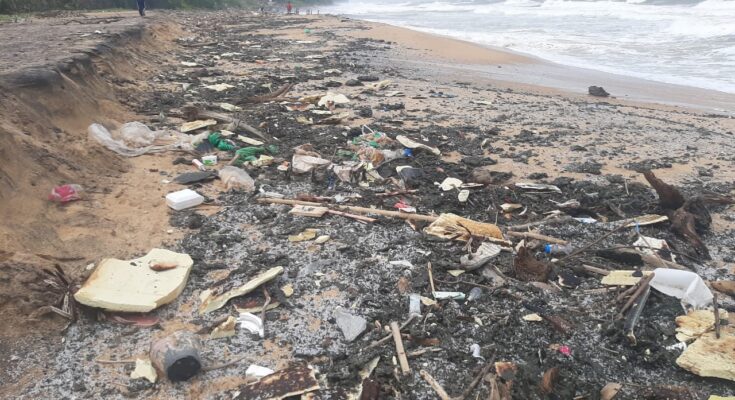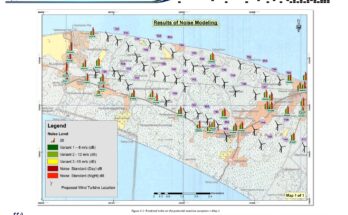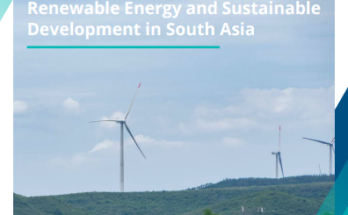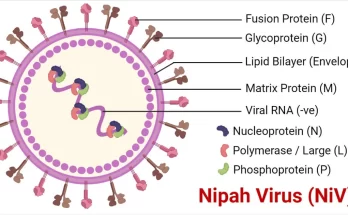
The fire break-out in the X-press pearl feeder vessel is now becoming the worst known disaster on Sri Lankan waters in recent history. At the time of the incident, the X-press Pearl has stationed approximately 9.5 nautical miles ahead of the port of Colombo, shipping 1486 containers with 25 tonnes of nitric acid, cosmetics, and several other hazardous chemicals onboard. The extent of the chemical spill created by the fire and subsequent explosion is currently under investigation, and the disturbing amounts of chemical residues, ashes and ship debris floating offshore and depositing along with the western coastline hint about the magnitude of the environmental catastrophe about to unfold. This article summarizes the web interview conducted on 29th May, with Dr. Deeptha Amarathunga, a senior scientist in the Environmental Studies Division of the National Aquatic Resources Research and Development Agency (NARA) regarding the ongoing efforts and the expected outcomes.
The Immediate Status of the Maritime Turmoil
Compared to the recent accident in the New Diamond vessel that occurred 40 – 45 nautical miles offshore, the present encounter with X-press Pearl can have a considerable impact due to its proximity to the Sri Lankan coastline. Instead of the oil spill we experienced last time, we are now dealing with a chemical spill from extremely hazardous cargo aboard the ship. Out of the total stock, the quantity spilt, burnt, or remaining on the ship is yet unknown to us, and the hazardous nature of these chemicals can bring down deadly environmental impacts. According to the experimental observations so far, the coastal stretch from Marawila to Panadura is confirmed as directly affected. The monitoring programme is broadening along the shoreline northward from Marawila and southward from Panadura to demarcate the extent of the damage.
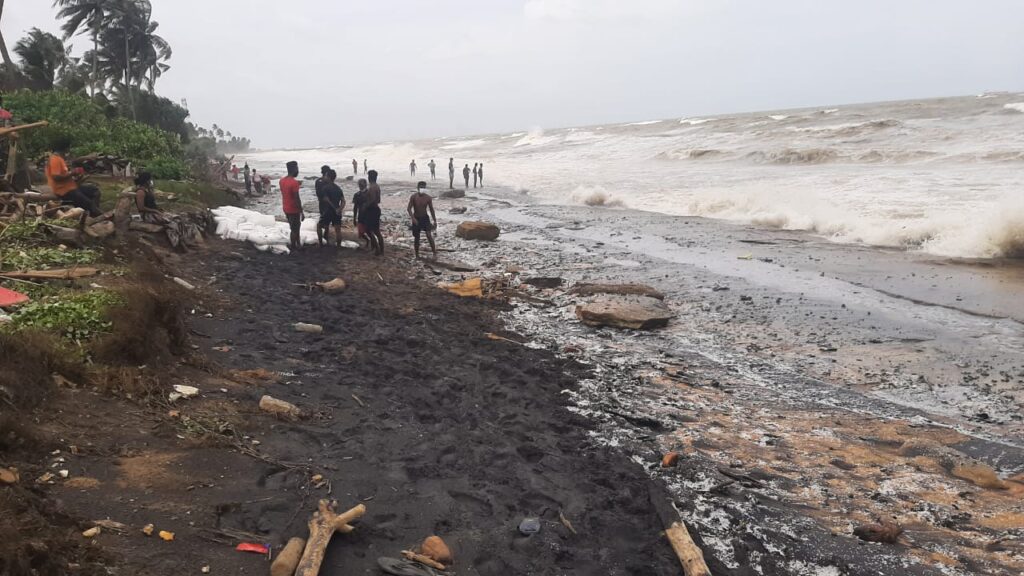
As a joint effort between NARA and Marine Environmental Protection Authority (MEPA) water sample collection is done at the site of the accident, and NARA is taking the lead in preparing an Environmental Impact Assessment report. This process is facilitated as per the National Oil Spill Contingency Plan (NOSCOP) operated under the MEPA and a multitude of stakeholders such as Sri Lanka Armed forces, Central Environmental Authority (CEA), Coast Conservation Department (CCD), Meteorology Department, NARA, etc. are involved. The NOSCOP act as the principal framework defining how each stakeholder entity should carry out their allocated responsibilities during a chemical/oil spill on Sri Lankan waters. Under the NOSCOP, NARA is entrusted with investigating the damage exerted on biological diversity.
How Bad Our Ocean and Coasts will be Affected?
At the moment, studies are being conducted to identify the nature and extent of the damage. To ascertain the magnitude of the event, further quantifications are required. In general, the coastline is a sensitive zone. The contamination of beaches with heaps of plastic pellets is causing dangerous levels of plastic pollution. These are low-density polypropylene that persists for hundreds of years without decaying. According to an early experiment conducted by NARA, the plastic concentrations along the western coast were found to be high, and the current circumstances will heighten the existing plastic pollution levels, especially in areas such as the Negambo shoreline. Stating the worst-case scenario, this incident will draw Sri Lanka into a front-rank from our present position as the 5th country with the highest marine plastic pollution in the global ranking. (Sri Lanka consider the supporting data for the current rank is erroneous and misinterpret our plastic pollution levels)
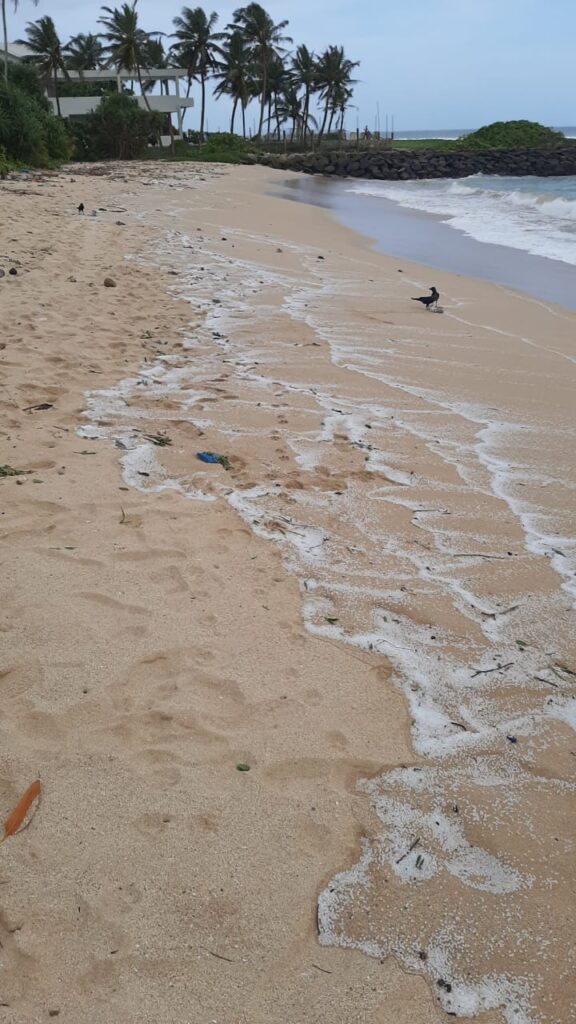
The explosions that occurred during the chemical combustion have elevated the sea surface temperature, and the nitric acid leaching and dilution in the ocean can lower the optimal pH levels. Although the pH fluctuations are mediated to a certain extent by the buffer capacity of seawater, the hyper-sensitivity of fish species to such pH modifications can endanger the populations. With the perception of pH difference, the majority is likely to escape from the affected region, while the resident species in reefs may get trapped and experience mortality. Altered ocean environments can wreak havoc on phytoplankton and zooplankton communities. The death and disruption of primary producers will negatively influence each tropic level and may even lead to the collapse of marine food chains. There is a high tendency for the mortality of fish larvae due to their limited mobility resulting in depleted fish stocks in the future. Moreover, benthic fauna such as crustaceans may share a similar fate of low mobility induced mortality.
Hard Blow on the Fishing Industry
Considering the risks of exposure to chemical residues, all fishing activities are restricted in the affected coastline. The imposed ban cut down the fish harvest retrieved from the western coast. Unfortunately, the western coast holds fame for the highest fish stocks, particularly the stretch from Alakanda to Negambo produces a daily rich harvest. The absence of such harvest can drive the local economy to a significant setback. Furthermore, the public need not worry as the available fish in the market is derived from other parts of the island as the eastern coast.
What will Become of Tourism?
The western coast is frequently visited by both local and international tourists. However, as the country remains under the travel restrictions of the Covid pandemic, the contribution of this event to the loss of tourism is quite low. There can be a small-scale impact on tourism in future due to microplastics on the beach. To calculate the lasting of the chemical effect, further experimentation is required. Once the travel ban is lifted and the country returns to normal, a separate assessment should be carried out to evaluate the impact on tourism.
Bouncing Back to Normal
The X-press Pearl accident had given rise to a range of interconnected consequences; thus, the impact analysis needs to be conducted referring to short-term, intermediate-term, and long-term time frames. Despite the cleanup measures taking place on the coastline, a certain amount of remaining plastic beads will get shredded into tiny microplastics and may continue to persist. Therefore, its effect is obvious to linger on for hundreds of years, making it a long-term problem. On the other hand, scientists believe chemical spill have more localized and short-lived effects. Yet, comprehensive future studies are required to predict the time span of the chemical adversities explicitly. The mass numbers of cosmetic containers onboard the ship are known to contain traces of heavy metals. Environmental concerns that arise due to heavy metal contamination can extend over a longer timescale with notable repercussions.
In conclusion, the combined damage due to the X-press Pearl fire accident can be several folds high when we focus on the big picture. As the teams of state officials and researchers work tirelessly to bring down the severity of the challenge we are faced with, the public is requested to stay out of the western shores until safety is ensured.

